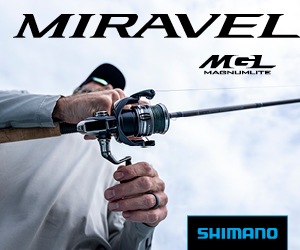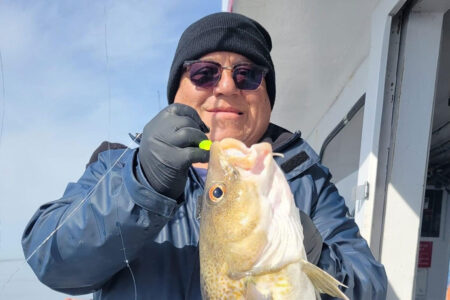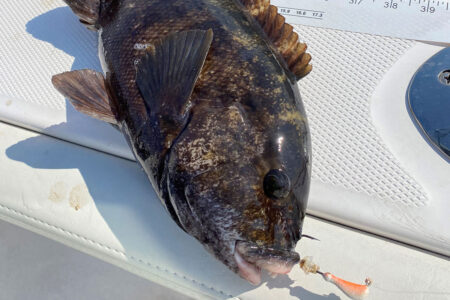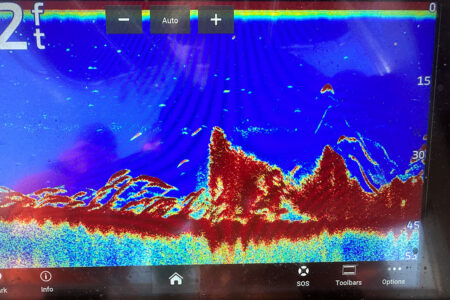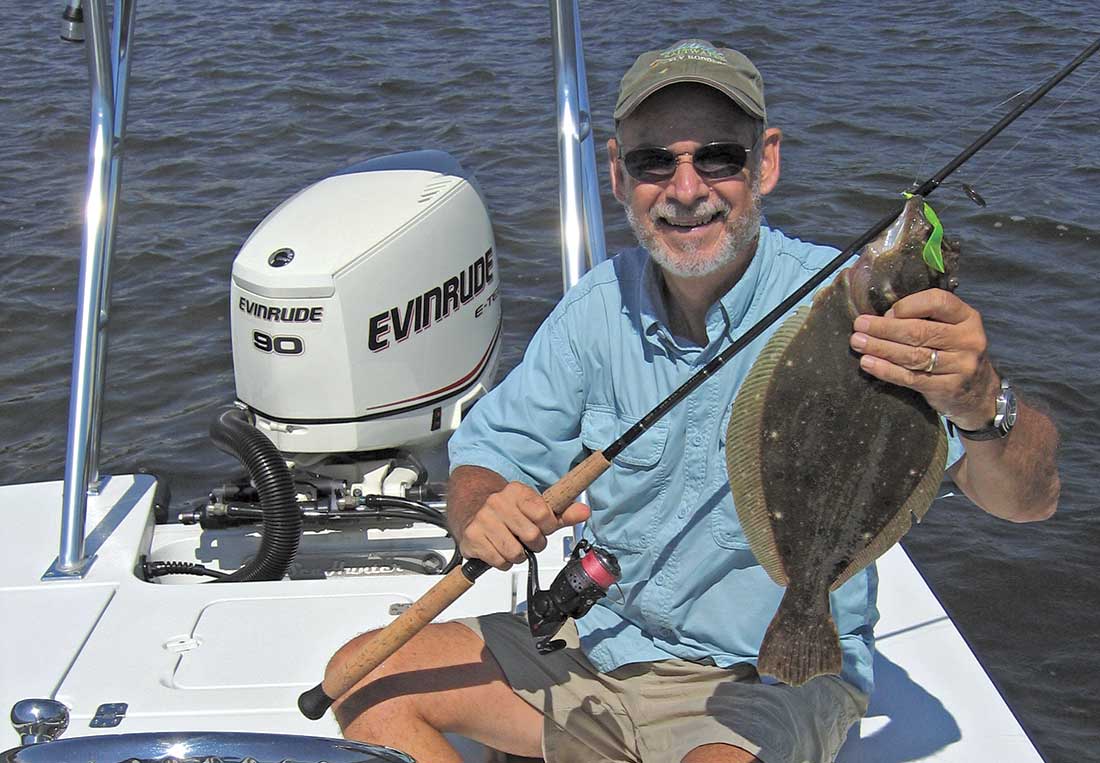
The two best-known ways to rig soft-plastic freshwater baits are the Texas rig and the Carolina rig. They work just fine in saltwater, too, and are effective ways to catch saltwater fish on soft-plastic jerk baits, shad and curly tails, and paddle tails in coastal back bays.
The Texas rig ties the leader directly to the hook eye and a lead weight rides right up against the nose of the bait. It’s the more popular of the two rigging methods. You can use a small egg sinker as the weight, or specially designed worm-rigging weights called bullet weights sold at tackle shops, or use no weight at all. The Carolina rig has a 12- to 30-inch leader tied to the hook eye and a small barrel swivel at the top end. An egg sinker is slid onto the main fishing line so it rides above the barrel swivel. In both rigs, an offset-style hook is implanted in the jerk bait.
By vertically jigging the rod tip, the lure rises and falls with a hopping motion that keeps the plastic bait just off the bottom, but within the striking zone of gamefish. A slow to moderate retrieve will usually get more strikes than a fast retrieve, especially in summer when very warm water temperature make the fish lethargic and sluggish.
Both methods are nearly weedless, which is a big plus when fishing over eel-grass beds for weakfish, or over shell beds for stripers because the lures slide right over rocks or obstructions that would hang up a lure armed with treble hooks, or with a standard lead head.
There are hundreds of hook options for rigging small soft baits, but big saltwater soft-plastic baits from Hogy Baits, Houdini Shads and Lunker City Slug-Gos need big hooks and most manufacturers now offer offset hooks in hefty sizes. Bronze freshwater-style hooks can rust in saltwater, so change them before each trip to avoid rusty-hook failure. Owner’s black chrome seems to hold up really well in the salt, and some companies also offer stainless steel hooks.
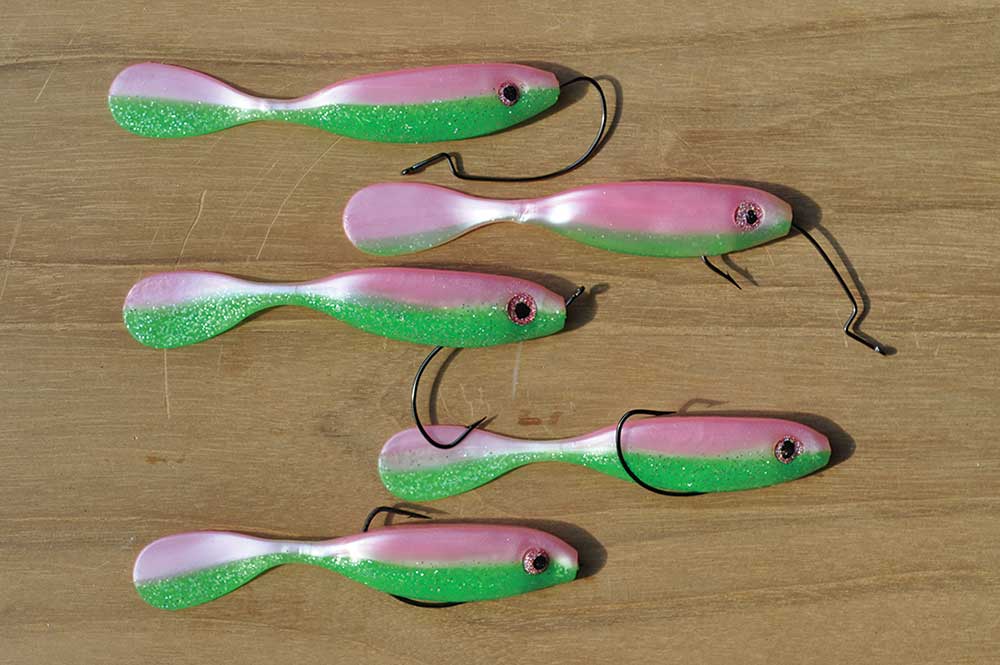
Soft plastics can also be fished plain without a nose weight. In very shallow water an unweighted worm, jerk bait, paddle-tail shad or curly-tail can be a very effective presentation. Some anglers prefer keel-weighted hooks instead, like those manufactured by Eagle Claw, Mustad, Owner and others. Owner also offers offset hooks with small leadheads, which makes the lure dance much like a traditional bucktail or leadhead, but with the added advantage of being weedless. If you’re fishing long soft baits, D.O.A. Lures’ long-shank leadhead is another good choice.
Each rigging method offers a different retrieve action so the angler can imitate a wide variety of lifelike bait antics. When worked in a slow hopping retrieve that slides and bounces the lure along the bottom, the Texas rig can be fished in water from only a foot or two in depth to deep drop-offs at channel edges and deep holes. The Carolina rig is a better vertical presentation and is deadly when drifting for fluke in water depths of 5 feet or more. When using a Carolina Rig, jig the bait with slight twitches of the rod tip so the lure zips upward a foot or so then flutters and glides back down. Fluke and weakfish will often strike on the drop-down.
Many jerk baits are molded with a slender body cavity in the belly into which the hook shank and weight slide into. Baits rigged with weights that are molded onto the hook shank can be fished in very shallow water slithered along the bottom, or near the surface. They bounce off gravel and rocky bottoms, through eel grass and slide over sandy bottoms.
Experiment. Discovering what works is half the fun. Soft baits rigged freshwater-style is a sure way to put a few more fish in the cooler.
